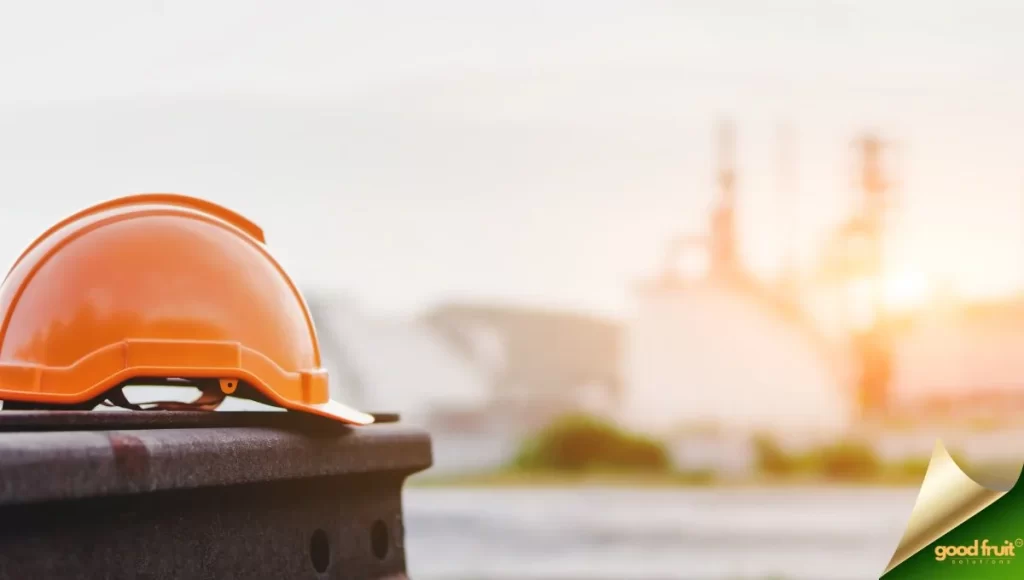The Sweet Story of Cacao in Davao City: From Tree to Table
Davao City, known as the “Cacao Capital of the Philippines,” is more than just a tourist destination with rich culture and vibrant city life—it’s a

In the realm of occupational safety, few aspects are as paramount as head protection. Whether navigating construction sites, industrial facilities, or hazardous environments, wearing appropriate headgear can mean the difference between life and death.
This comprehensive article delves into the significance of head protection, emphasizing the pivotal role of hard hats and other personal protective equipment (PPE) in ensuring safety, particularly in environments prone to hazards like hydrogen sulfide (H2S).
Workplaces present a myriad of hazards, ranging from falling objects and electrical shocks to chemical exposure. One particularly lethal threat is hydrogen sulfide (H2S), a colorless, highly toxic gas commonly found in industrial settings such as oil and gas refineries, wastewater treatment plants, and chemical manufacturing facilities.
Exposure to even low concentrations of H2S can lead to respiratory distress, loss of consciousness, and ultimately, death.
Hard hats, a staple of head protection, are designed to mitigate the impact of falling objects, bumps, and scrapes, shielding workers from potential head injuries. Constructed from durable materials like high-density polyethylene or fiberglass, these helmets provide a sturdy barrier against external forces.
Additionally, modern hard hats often feature suspension systems that help absorb shock and distribute impact, further enhancing their protective capabilities.
In environments where H2S is a concern, specialized headgear becomes indispensable. Some industries mandate the use of helmets equipped with integrated respiratory protection systems to safeguard against inhalation of toxic gases.
These advanced solutions not only shield the head but also ensure respiratory safety, offering comprehensive protection in hazardous environments.
Ensuring compliance with safety regulations and implementing best practices are essential for safeguarding workers’ well-being. Employers must assess workplace hazards, provide appropriate PPE, and train personnel on its proper use.
Regular inspections of headgear for signs of damage or wear are crucial, as compromised equipment may fail to offer adequate protection.
Workers, too, play a pivotal role in their safety. Adhering to PPE protocols, including wearing hard hats consistently and correctly adjusting them for a snug fit, can significantly reduce the risk of head injuries.
Remaining vigilant and reporting any safety concerns or incidents promptly fosters a culture of safety awareness within the workforce.
When it comes to head protection, investing in quality equipment is non-negotiable. Cutting corners on PPE compromises worker safety and can lead to costly consequences, including medical expenses, lost productivity, and legal liabilities. Employers must prioritize the procurement of certified headgear that meets industry standards, ensuring reliability and effectiveness in hazardous environments.
Hard Hats: These are the most common form of head protection, suitable for general industrial use. They come in various types, including Type I, which provides top impact protection, and Type II, which offers both top and lateral impact protection. Hard hats may also feature additional accessories such as chin straps and visors for enhanced safety.
Bump Caps: Designed for environments with low overhead clearance or minor bump hazards, bump caps offer minimal protection against impact. They are often worn by workers in settings such as maintenance, inspection, and warehouse operations.
Full Brim Hard Hats: These hard hats feature a wider brim around the entire circumference of the helmet, providing increased protection against sun exposure, rain, and falling debris. They are commonly used in outdoor construction and utility work.
Specialized Headgear: In high-risk environments where hazards like H2S are present, specialized headgear is essential. This may include helmets with integrated respiratory protection systems or gas masks to safeguard against toxic gases and airborne contaminants.
The consequences of failing to prioritize head protection can be dire. Head injuries not only cause physical harm but also result in emotional distress, financial burdens, and long-term disability.
The human cost of workplace accidents extends beyond the individual, affecting families, coworkers, and communities at large.
Apart from the human toll, workplace accidents also carry significant economic ramifications. Direct costs such as medical expenses, workers’ compensation claims, and legal fees can quickly escalate, straining company finances. Indirect costs, including lost productivity, equipment damage, and reputational damage, further compound the financial burden.
Investing in comprehensive head protection measures, including quality PPE and robust safety protocols, is a proactive strategy for mitigating these risks and safeguarding both human lives and economic interests.
At Good Fruit Solutions, we understand the critical importance of head protection in ensuring workplace safety. Our range of high-quality PPE, including hard hats and specialized headgear designed for H2S environments, provides reliable defense against potential hazards.
With a commitment to excellence and safety, we empower organizations to prioritize the well-being of their workforce.
Head protection is a fundamental aspect of occupational safety, particularly in environments where hazards like H2S pose significant risks. By investing in quality headgear, adhering to safety regulations, and fostering a culture of vigilance, employers can mitigate the likelihood of head injuries and create safer workplaces for all.
Take proactive steps to safeguard your workforce – choose Good Fruit Solutions for your PPE needs. Together, we can build a safer, healthier work environment for everyone.
Davao City, known as the “Cacao Capital of the Philippines,” is more than just a tourist destination with rich culture and vibrant city life—it’s a
Eating seasonal fruits offers not only fresh and flavorful options but also numerous health benefits. Nature provides a variety of fruits packed with nutrients that